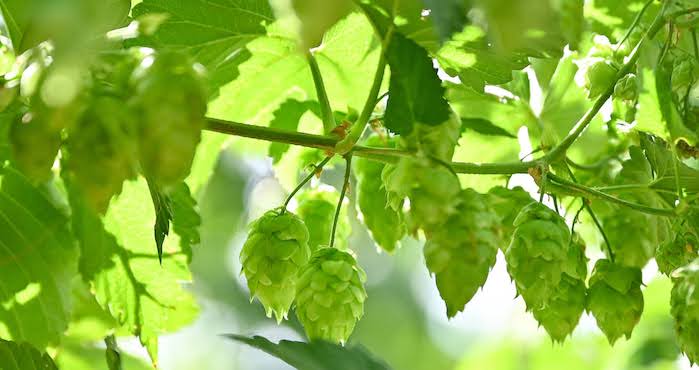Hop Science Newsletter (May 2017)
In this issue: timing of adding hops, and why hops are good to increase flavour stability.

ASK THE HOPS WHEN THEY WANT TO BE PUT INTO THE BEER
For this study these US researchers have chosen two very different varieties, Simcoe and Hallertau Mittelfrüh, and brewed beers using the following different hopping regimes: 60 min boil, 25 min whirlpool, or 48 h dry hopping. Additionally, the impact of the yeast strains used on treatment was investigated. Each treatment was compared with an unhopped control using stir-bar sorptive extraction GC-MS with a descriptive sensory analysis. Results indicate that whirlpool additions produced beers with the highest concentrations of geraniol, linalool, and ß-citronellol, which is in line with intense citrus flavours one often achieves with high whirpool additions. Beers with Simcoe produced more intense and individually distinct aromas with each hopping regime compared to the Hallertau Mittelfrüh hopped beers. Conversely, beers brewed with Hallertau Mittelfrüh hops showed less intense aromas with less distinction, except for the dry-hopped treatment, which was characterized by a more floral type of aroma than the other Hallertau Mittelfrüh treatments. So find out which time of addition suits best your favourite variety!¹
MORE SPECIFICS These German brewing scientists have already been looking into this for a couple of years. The ability of hop constituents to suppress the formation of 3-methylbutanal and 2-furfural in wort-like model systems containing maltose, leucine, and Fe2+ was investigated. The functional principle by which hop α-acids and ß-acids diminish the formation of 3-methylbutanal and 2-furfural may be ascribed to their unique molecular structure and chemical properties. This allows them to perturb oxidative or nonoxidative formation of aldehydes. Findings from this study indicate that antioxidative potential may be explained through, but not necessarily limited to, two mechanisms. First, because of the hop α-acids’ complexation functionality towards transition metal ions such as iron and copper, they can block or attenuate oxidative pathways of the Maillard reaction and suppress the generation of reactive oxygen species, thereby preventing oxidative degradation of leucine to 3-methylbutanal. Second, once hydroxyl radicals are formed, they can act directly as antioxidants and suppressing free radical reactions with leucine again, which can yield its corresponding aldehyde. Other aldehydes may show the same behavior and response to the presence to hop α-acids.²
People are more familiar with harvest guides for wine – but for hops? This is the third crop year, where we dive into the aroma specifics of the most important hop varieties according to the crop year. As a natural product, hops are dependent on the climate, location, soil and many other factors. If you are interested in receiving our hop harvest guide, just send me an email! Christina.schoenberger@jobharth.de
EVENTS
Barth-Haas Hop Harvest Guide
We proudly sponsor the RMI Analytics Hop Tour Find out more here: http://www.rmi-analytics.com/hoptour
Join the VLB conference in Bangkok,
11-13th of June, https://www.vlb-berlin.org/bangkok2017
Make sure to attend the 2nd International Brewers Symposium on Hops,
July 26th to 28th, Corvallis, OR USA. http://hopsflavor2017.com/



